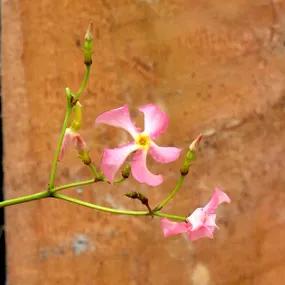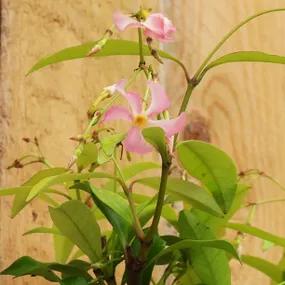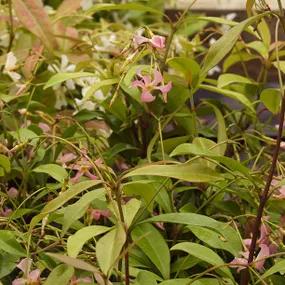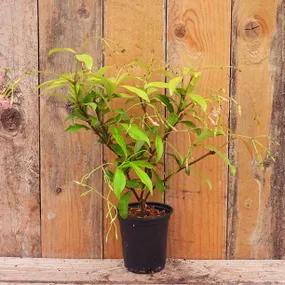Pink Asiatic Jasmine Plants
Honest Delivery PricesTrachelospermum asiaticum
- Glossy evergreen leaves
- Medium growth to 4m x 3m
- Small pink flowers with a yellow centre
- Delicious sweet scent
- Blooms May to July
- Full sun or partial shade
- Hardiness rating H4
Recommended extras
Description
Asian / Chinese Jasmine Plants, Trachelospermum asiaticum
Dainty, pale pink flowers with a yellow centre and a strong, sweet scent. Blooms earlier than the species, May to July, sometimes longer. To 4m x 3m
A lovely climbing plant for a sheltered spot or a south facing wall.
Browse our other Trachelospermum varieties, true jasmine plants, or our full range of climbers.
Features:
- Glossy evergreen leaves
- Medium growth to 4m x 3m
- Small pink flowers with a yellow centre
- Delicious sweet scent
- Blooms May to July
- Full sun or partial shade
- Hardiness rating H4
Growing Asiatic Jasmine
It does need some shelter and will do best away from drying winds, preferably against a warm wall. It needs a well drained moisture retentive soil but is not fussy about pH and it will require support. It is very good grown as a pillar or over an arch as long as the site is not too exposed, and is perfect for pots.
It is ideal grown in a warm site close to a sitting area where the wonderful scent can be best appreciated.
Planting Instructions
How to grow Trachelospermum asiaticum:
Needs a constantly moist root run during the growing season and so it is essential to incorporate a humus rich compost around the roots when planting.
Make a good size hole, larger than the root ball, add some bonemeal and Root Grow around the roots and back fill with the compost. Water in well and mulch. It will need support. If growing against a wall use trellis or vine eyes and wires and tie in the major stems.
Look out for: Trachelospermum jasminoides is frost hardy but may need protection in severe winters. It does not do well in exposed sites with drying winds or with impoverished soils and so will benefit from a monthly feed during the growing season and should be kept well watered throughout the summer. It may occasionally suffer with scale insects which can be removed with the use of horticultural oils or a dilute solution of washing up liquid.





